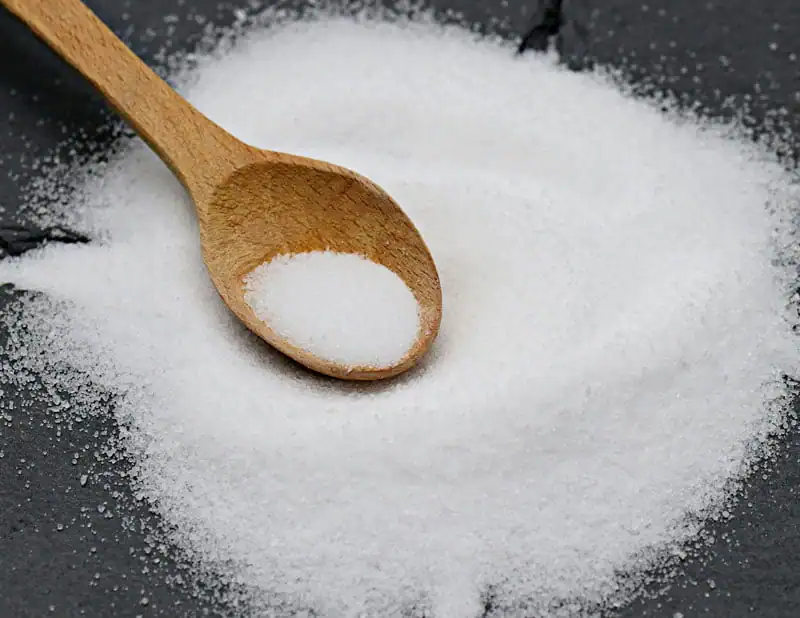Swimming pools are a popular way to beat the heat in the summer and many of them use salt to sanitize the pool water. I began to wonder what exactly is in pool salt and if it had any similarities to food-grade salt.
As it turns out, not all salts are created equal and the type of salt used in swimming pools is different in formulation from the type used in food preparation. In this article, I will dive into the differences between pool salt and food-grade salt and discuss the concerns around ingesting pool salt. I’ll also explore the potential health effects of consuming pool saltwater.
Can You Eat Swimming Pool Salt?
Pool salt is technically edible, but it’s not recommended for human consumption in large quantities. The salt used in pool chlorination can contain impurities such as stabilizers and anti-caking agents, which can be harmful if consumed in large quantities.
Pool salt is commonly used in swimming pools to generate chlorine through a process known as salt chlorination. The salt used in pools is sodium chloride, which is the same type of salt that is used in cooking and as a food seasoning however, some brands of pool salt have been processed and treated with additives that make it work better for use in pools. To learn more about how salt is used in pools as part of the sanitation process (in lieu of adding chemical chlorine) see our article Chlorine to Saltwater Pool Conversion: Can it be Done?
There are some pool salt brands that label their products as 99.9% pure sodium chloride and clearly state that there are no additives in the salt. Some of these salt products even state that they are ‘Food Grade’. Could you salt your eggs with this salt? Probably. The concern here is that while these products might be able to pass Food & Drug Administration (FDA) tests, the products have usually not been evaluated or packaged for human consumption.
Another consideration is that many people use Iodized salt for cooking & baking, in order to get a sufficient quantity of this essential nutrient. Pool salt does not contain Iodine. If you’d like to know more about Iodine and Iodized salt, see the article Details On Iodine In Himalayan Salt: What You Need To Know.
Just swallowing an occasional bit of pool water isn’t really a concern, but using pool salt on your food is not recommended. Any salt that is designed for a specific purpose is not meant to be ingested and will be labeled as such by the manufacturer.
Is Pool Salt The Same As Cooking Salt?
Pool salt and cooking salt are both types of sodium chloride, but pool salt is formulated for use in swimming pools and is typically coarser. Cooking salt, on the other hand, is specifically formulated for use in food preparation and is typically finer and may be more refined.
- Swimming Pool Salt – Has a coarser texture which makes it easier to dissolve in water, which is important for the salt chlorination process.
- Cooking Salt (Table Salt) – A finer texture and is more refined making it easier to mix well into foods. It’s available in a variety of forms, including iodized salt, sea salt, and rock salt, and can be used to enhance the flavor of food.
Despite their similarities, pool salt and cooking salt should not be interchanged due to the fact that salt intended for a pool has not been tested or evaluated for use in food.
Final Thoughts
Overall, pool salt has not been tested or evaluated for human consumption and should not be used as a substitute for cooking salt. Despite their similarities, some brands of pool salt could have additives that could lead to gastrointestinal distress or other health complications if ingested in large quantities.
For food preservation purposes, it’s best to use high-quality table salts specifically designed for this purpose. Many culinary salts have been selected for their flavor profiles and to enhance the enjoyment of the foods they are used on. We recommend using all salts for their intended purpose.
Featured Photo by Marek Kupiec







